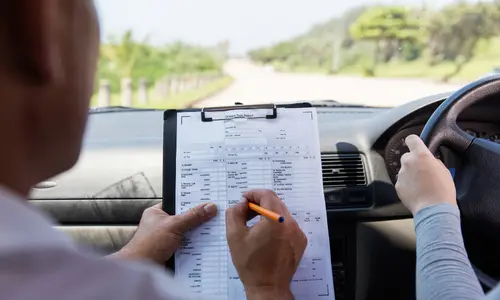A recent report has revealed that more than half of those applying for a licence to drive a car in Gujarat are failing their practical driving test. According to data from the Sarathi website, 57% of applicants did not clear the test in the 2024-25 period, highlighting the challenges faced by new drivers in the state.
Testing Challenges and Trends
In 2024-25, around 7.58 lakh people took a total of 20.5 lakh driving tests in Gujarat. Out of these, only 6 lakh successfully obtained their licences. The failure rate for four-wheeler tests was particularly high, with most applicants needing an average of three attempts before passing. In contrast, only 15% of two-wheeler applicants failed their test, showing a marked improvement from previous years when the failure rate for cars was 47% and for two-wheelers was 27%.
Officials at the Regional Transport Office (RTO) have pointed out that the most difficult parts of the test for car drivers are the up-gradient and reverse S tests. More than 80% of failures occur during these sections, where drivers are required to keep the car from rolling backwards on a slope or navigate tight turns without touching the poles. Other challenging tasks include parallel parking and the English 8 track test, which checks a driver’s ability to manoeuvre the car through a figure-eight-shaped course.
The RTO has also noted a shift in the age group of applicants, with many young people applying for their learner’s licence as soon as they turn 18. Officials believe this trend, encouraged by parents who want their children to avoid illegal driving, has contributed to the higher failure rates for cars.
Some regions in Gujarat, such as Bhuj, Porbandar, and Dahod, have recorded the highest failure rates, while Bavla and Navsari have the lowest. Despite the difficulties, the overall performance of two-wheeler applicants has improved, with fewer candidates failing compared to previous years.
The high failure rate for car driving tests in Gujarat reflects the increasing strictness and complexity of the testing process, as well as the need for better preparation among applicants.
High Failure Rates Not Limited to Gujarat
It is not just Gujarat where passing the driving licence test has become a significant hurdle. Across the country, stricter testing and reforms have led to a sharp rise in failure rates in several states.
In Kerala, the introduction of tougher, technology-backed tests and real-world driving scenarios has seen the pass rate plummet from a previous 95-100% to just 40-52%. The reforms, which include advanced manoeuvres, public road testing, and stricter scrutiny, were brought in to improve road safety after concerns that lenient standards allowed unskilled drivers to obtain licences, contributing to rising accidents.
Delhi has also seen a similar trend. Nearly half of those taking the automated driving licence test in the city fail, with success rates below 45% at several test centres. The automated system uses sensors and cameras to assess drivers on 24 parameters, leaving little room for error or human intervention. In contrast, manual tests in Delhi still have a much higher pass rate, around 80%, raising questions about the consistency and rigour of different testing methods.
Maharashtra presents a different picture, with a very low average failure rate of just 2.4%. However, experts have expressed concern that such high pass rates may mean the tests are not stringent enough, potentially allowing unskilled drivers on the roads. Some RTOs in Maharashtra have failure rates below 1%, while only a few exceed 5%, prompting calls for tougher testing and more automated tracks to improve road safety.
These contrasting figures show that while stricter testing can lead to higher failure rates, it also aims to ensure that only skilled drivers receive licences. In the past, high pass rates often meant that even those who could not drive well were able to get a licence, raising serious concerns about road safety. The move towards more rigorous and technology-driven assessments is seen as a step to address this issue nationwide.


